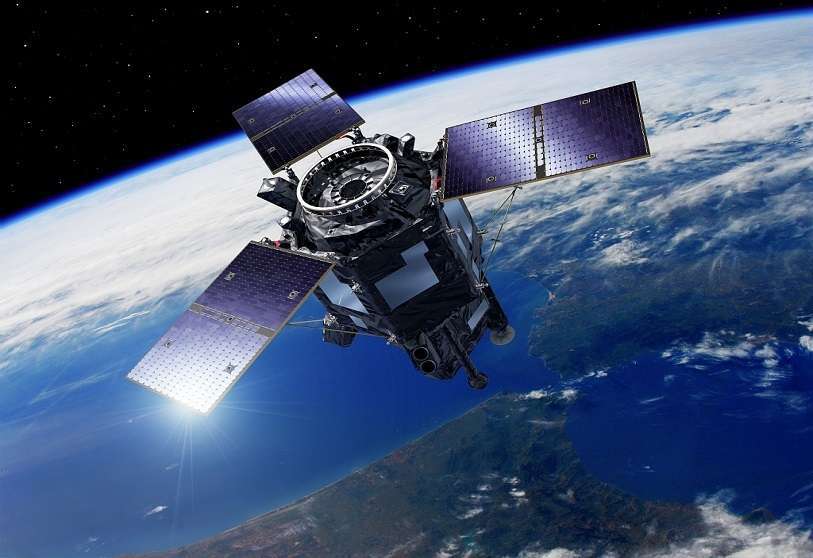Spanish satellite Ingenio has been lost due to a failure of Vega rocket

Pedro Sánchez's government has been left without the observation satellite it hoped to put into orbit. SEOSAT Ingenio is part of the Spanish Earth Observation Program (PNOTS), which together with the Paz radar satellite, placed in orbit in February 2018 and in service since September of the same year, intended that Spain would have a dual Earth observation system, optical and radar.
However, an anomaly which arose in the European Vega launcher during its ascent flight caused a lethal deviation from its trajectory and the loss of the Spanish electro-optical satellite Ingenio and its travelling companion, the French Taranis.
According to the first estimates yet to be confirmed, the failure occurred when the fourth and last propulsion stage of Vega had not yet reached 300 kilometres in height and the two satellites were still attached to the rocket.

The final stage and the two satellites are expected to have re-entered the Earth's atmosphere and been destroyed. It will have burned through the layers surrounding the Earth and the unburned remains will have sunk into the sea.
With the disappearance of Ingenio, not only over 140 million euros but also a large part of the work of the Spanish space industry has evaporated. Under the management of Airbus Space Systems España, companies such as Airbus CRISA, Elecnor Deimos Space, GMV, GTD, HV Sistemas, IberEspacio, Indra, SENER and Thales Alenia Space España had turned their attention to producing it.

Arianespace, the launch services company responsible for putting Ingenio and Taranis into orbit, was broadcasting the launch live on television. Suddenly, some 15 minutes from the moment of take-off, the broadcast was cut off and was not re-established until just after 4 a.m. Spanish time.
It was then that the chief executive of Arianespace, Stephan Israel, appeared on the screen to announce that an "anomaly" had appeared shortly after the take-off. He also reported that his company's technicians were "analysing the telemetry data" in order to provisionally clarify what had happened. Israel has already ordered the establishment of a Commission of Inquiry to investigate the details of the accident.
At 5:11 in the morning, Arianespace and the European Space Agency issued a brief statement saying that "eight minutes after liftoff of Vega mission VV17, following the first ignition of the engine of the Avum upper stage, a deviation of trajectory was identified, entailing the loss of the mission".

The firm confirms that telemetry data analysis is being carried out to determine the cause of the failure" and refers to a press conference to be held on Tuesday November 17th at 14:00, where more provisional details will be given about what happened.
Attending the launch live in the main room of the Jupiter Control Centre was the director of Airbus Space Systems Spain, Fernando Varela, as well as the head of the project and father of Ingenio, Oriol Álvarez.
There was also a small group of managers from the Centre for the Development of Industrial Technology (CDTI) of the Ministry of Science and Innovation, the owners of Ingenio, led by its director general, Javier Ponce, and the head of the Space and Relations with the European Space Agency (ESA) department, Jorge Lomba.

The failure of flight number 17 of the small European launcher is Vega's second. The first was flight 15, which took place on 11 July 2019 and resulted in the destruction of the 1,200-kilogram observation satellite Falcon Eye 1, owned by the Emirates Armed Forces.
On 4 September 2019, the Commission of Inquiry presented its first conclusions and ruled out any act of sabotage that had initially been speculated upon. It identified as the most likely cause of the accident a structural failure in the second stage, due to the high temperatures generated by the Z23 engine.
Two months later, he revealed that "a thermal protection design defect in the second stage was the main cause of this launch failure". This caused "a hot gas leak that affected critical structural parts of the second stage".

The Emirates Space Agency has revoked the use of Vega for the launch of Falcon Eye 2, which is scheduled to fly into space in the coming weeks. It will do so on board a Russian Soyuz launcher also from French Guiana and under the responsibility of Arianespace.
Vega is a launcher manufactured by the Italian company Avio. An acronym for the Italian Vettore Europeo di Generazione Avanzata, Vega was developed in 1998 and made its first flight in February 2012. Since then it has flown 17 times, 15 of which have been successful and two have resulted in failure.
With a height of 30 metres and a diameter of three metres, it is capable of placing payloads of between 300 and 1,500 kilos into low Earth orbits. The VV17 mission had taken off with two satellites totalling 963 kilos at launch, 788 kilos of which corresponded to Spain's Ingenio, and 175 kilos to the small scientific satellite Taranis, of the French National Centre for Space Studies (CNES).








